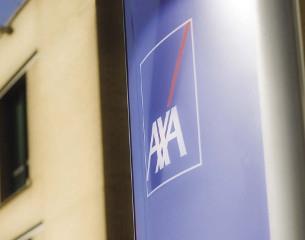If you read nothing else, read this…
- Low-emission cars are increasingly popular in employers’ schemes.
- Journey planning can help employees use the most cost-efficient routes for their journeys.
- Fewer employers offer new recruits a fuel benefit.
Green agenda
Low-emission cars are an increasingly common feature of employers’ travel policies as they strive to reduce their carbon footprint as part of their corporate social responsibility efforts.
Alison Argall, business development director at Tusker, says: “Employers are moving [employees] to more fuel- and carbon-efficient [cars]. Where employees are coming out of their own cars into salary sacrifice [cars], we are seeing typical reductions in carbon of about 50g/km per car.”
This emissions reduction is helping employers to reduce costs because of the tax and national insurance breaks available on company cars and fuel.
Employers yet to embrace the national green agenda should, at the very least, regularly review their travel policies to ensure they are optimising the tax breaks available.
Mike Moore, director at Deloitte Car Consulting, says: “At the very least, employers should be aware that if their [fleet] emissions go above 130g/km, then they as a business won’t be able to recover the full cost of providing the car for corporate tax purposes.”
Journey planning
Employers are looking to lower their carbon footprint further by promoting journey planning within their travel policies. This may include providing details of petrol stations where employees can buy relatively cheap fuel, or simply replacing a car journey with a conference call.
Moore says: “I have seen a trend of discouraging travel where it is not absolutely required, and trying to take advantage of things like video conferencing, rather than making a physical journey, particularly if it is with work colleagues that [employees] actually know, and they don’t have to do as much meeting and greeting. If it warrants a face-to-face meeting, employers should try to encourage things like video conferencing in which employees can see who they are talking to. Things like that are on the increase.”
Journey planning can also involve reviewing an employee’s means of transport. Julie Summerell, managing director at TR Fleet, says: “What is the most competitive way of [an employee] doing that journey? The train might be cheaper, hiring a car might be cheaper, or it might be conference calls.
“This whole journey-planning piece has become more topical. It’s not just the journey, it’s the total cost of a meeting: it’s the fuel, wear and tear on the [car], the cost of parking. More and more employers are looking at the whole cost of the journey versus conference calls.”
Argall advises employers to encourage their staff to consider geo-mapping to ascertain mileage costs before a journey. “Geo-mapping enables analysis by looking at traditional routes and which journey will be best to take,” she says. “It can look at taxi use, where people could be using a pool [car], and reducing costs in a more efficient fashion.”
Salary sacrifice car schemes
Salary sacrifice cars continue to be a popular part of employers’ travel policies. “We are definitely seeing growing momentum, not necessarily from fleet, but from an HR perspective in terms of employee reward,” says Argall. “Typically, we’re looking at organisations that may have a fleet already, but are looking to do something a little bit different in terms of adding to their reward package.”
But this is not a popular benefit choice for all employers. Helen Fisk, AutoSolutions manager at ALD Automotive, says: “There are a lot of employers looking at it, but a lot still decide not to take it up because it is still a company car scheme and a fleet that they need to manage.
“I think that’s on the back of them launching benefits schemes with salary sacrifice for other things, such as pensions.”
Cash versus car
Company car entitlement has been another focus for employers this year, with many pondering the cash-versus-car argument. “Years ago, people were given a car whether they really needed one or not,” says Fisk. “It was part of a perk package. Employers are now assessing who actually needs a car, and, on the back of that, people who are allowed to use their own car for business, and looking at whether they get a cash allowance or not.”
There has also been a trend of employers looking into employee car ownership schemes, particularly those with staff that clock up a high business mileage.
Deloitte Car Consulting’s Moore says the tax regime for company cars will remain largely the same, but over time, a higher percentage of tax will be applied to a car’s list price if CO2 emissions stay the same.
“So there are some [employers] now considering whether high-business-mileage drivers should move to employee car ownership schemes if it works for them,” he says. “As a general rule, we usually say it’s only worth considering if [employers] have a significant population of drivers who do at least 12,000 to 15,000 business miles [per year].”
Driver and vehicle safety
Employers’ duty to ensure the health and safety of their employees includes time spent driving for work. Over and above this, they should also make sure a private car being used for work purposes is safe and fit for purpose.
“There is a need for employers to check with the Driving and Vehicle Licensing Agency that an employee’s car has an MOT, and that they have the correct class of insurance for business use,” says TR Fleet’s Summerell.
Fuel cost
Fuel benefit has fluctuated in popularity with employers over the past year. Employers that already provide fuel cards, or free fuel for private miles, have tended to continue doing so, whereas a number of organisations that have gone through a transition, such as a merger or acquisition, have tended to buy their employees out of fuel cards, and not offer cards to new joiners.
Moore says: “In terms of fuel card use, that seems to have stabilised. If employers are providing them, they’re still providing them, and those that are phasing them out have phased them out by now. [Fuel cards are] going to become more and more expensive as the fuel scale goes up.”
Fisk agrees, adding that the number of employers offering staff free fuel is definitely in decline. “Employers don’t actually realise sometimes that it is costing them to have the benefit because [employees are] not doing enough private miles to justify it,” she says.
“There is certainly a bit of an education programme going on, and lots of [employers] are trying to educate drivers about whether it’s a benefit or not, and giving people the option to come out of it.
“We’re certainly seeing that if people come out of a company car and go into a cash allowance, the free fuel is taken away as a matter of course. It’s quite rare to see it as part of a new starter package.”

Case study: North Yorkshire County Council boosts green credentials
In a bid to reduce its carbon footprint, North Yorkshire County Council introduced a green car scheme in 2010, which only includes cars with carbon emissions of less than 120g/km.
The scheme, provided by Tusker, allows staff to take up a car through a salary sacrifice arrangement, enabling them to save on tax and national insurance.
John Robinson, benefits and reward consultant at North Yorkshire County Council, says: “We introduced it as a green car scheme, partly due to the fact that we knew this would help to reduce carbon dioxide (CO2) [emissions], but as an employee benefit, not a fleet situation. In other words, it was entirely up to the individual whether they took a lease car to use for work, or simply took a lease car to use for their own personal use.”
The council also agreed to pay employees 40p a mile for the first 10,000 miles of business use of a car, and continues to do so. About 50% of scheme members use cars for work.
“We introduced a scheme whereby we still paid them 40p a mile, so even though it is still classed by [HM Revenue and Customs] as a company car, we are still paying individuals 40p a mile,” says Robinson.
“It encourages those people that do use a car for work to actually use it as an option. We’ve managed to reduce CO2 emissions on the scheme from people trading in their old cars to the green cars. They have dropped their CO2 emissions by 50g/km on average.”

Case study: Axa supports staff with travel benefits
Insurer Axa offers all its employees the opportunity to have a company car, using three funding methods: employee car ownership, contract hire and a salary sacrifice scheme.
The organisation also offers staff a cash allowance towards the cost of a car for those that need it for work, as well on those at a particular employee grade in the organisation.
As well as the car scheme, Axa offers staff a range of travel-related benefits, including bikes-for-work through its flexible benefits platform, flexible or home-working opportunities, and support and guidance on safe driving for work, which includes journey planning.
Nadeen Jackson Barker, reward consultant at Axa, says: “It is really about being as flexible as possible, and recognising that we’ve got quite a diverse workforce, and that no one solution would fit both business and private needs, in the most efficient and cost-effective way possible.
“There is definitely a very green agenda behind our travel policy. All our [cars] are low carbon dioxide (CO2), so individuals pay a contribution that is equal to the benefit-in-kind. In times that are quite austere, people are looking for the most affordable option, and it’s the lower CO2 cars that fit in that category.
“Duty of care is a big issue for us, so we have a robust process in place to ensure those [employees] that are using their private [cars] are adequately checked and that the cars are roadworthy and in good condition.”

Viewpoint: Alastair Kendrick: Employers seek solutions to rising fuel costs
A growing number of employers are looking at what they can do to mitigate the cost of the commute for their employees, given the ever-increasing cost of fuel.
Some of the ideas that are being explored include permitting more home working with better IT capability, which enables employees working at home to Skype/video conference into meetings, removing the need for them travel to the office.
Employers may also allow staff that do need to travel in to work to flex their working hours, so they do not need to get caught in the rush-hour traffic jams, which saves fuel costs and makes their commute less of a burden.
Employers can also promote a car-sharing arrangement for employees, which they can help to organise and support via the organisation’s intranet site. Allowing preferential parking places to employees who take advantage of this arrangement can help to promote the scheme.
Employers can also consider talking to local bus operators to encourage the creation of routes and timetables that fit with the organisation’s working patterns, enabling employees to commute on public transport. For employees who need a car when at work, having a pool car or vehicle available for short-term hire is a consideration for employers.
In the past, many employers have dealt with the idea of assisting employees using a company car with their commuting costs by allowing private fuel. But in today’s world, this is no longer considered a feasible offer given the taxable benefit it attracts, which is why many employers no longer provide this benefit.
So, employers need to be creative and to think of new ideas in relation to their travel policy. There is clearly a lot of demand by workers for a new flexible approach to working which supports the environment.
Alastair Kendrick is tax director at MHA MacIntyre Hudson



































